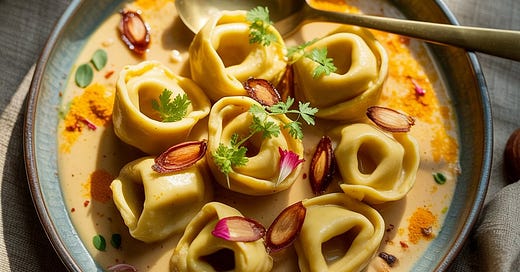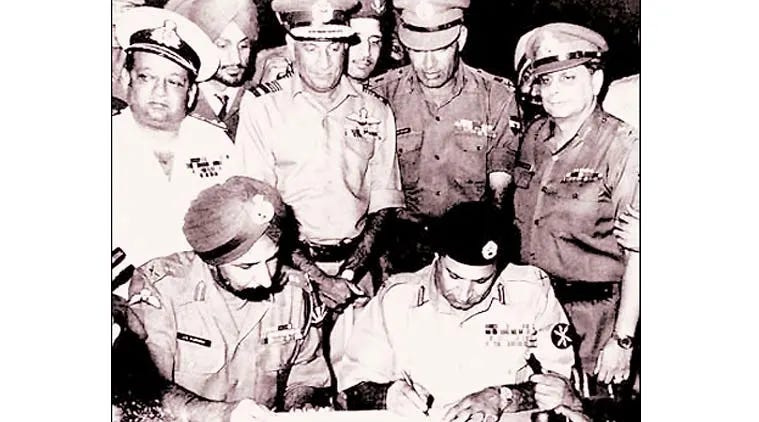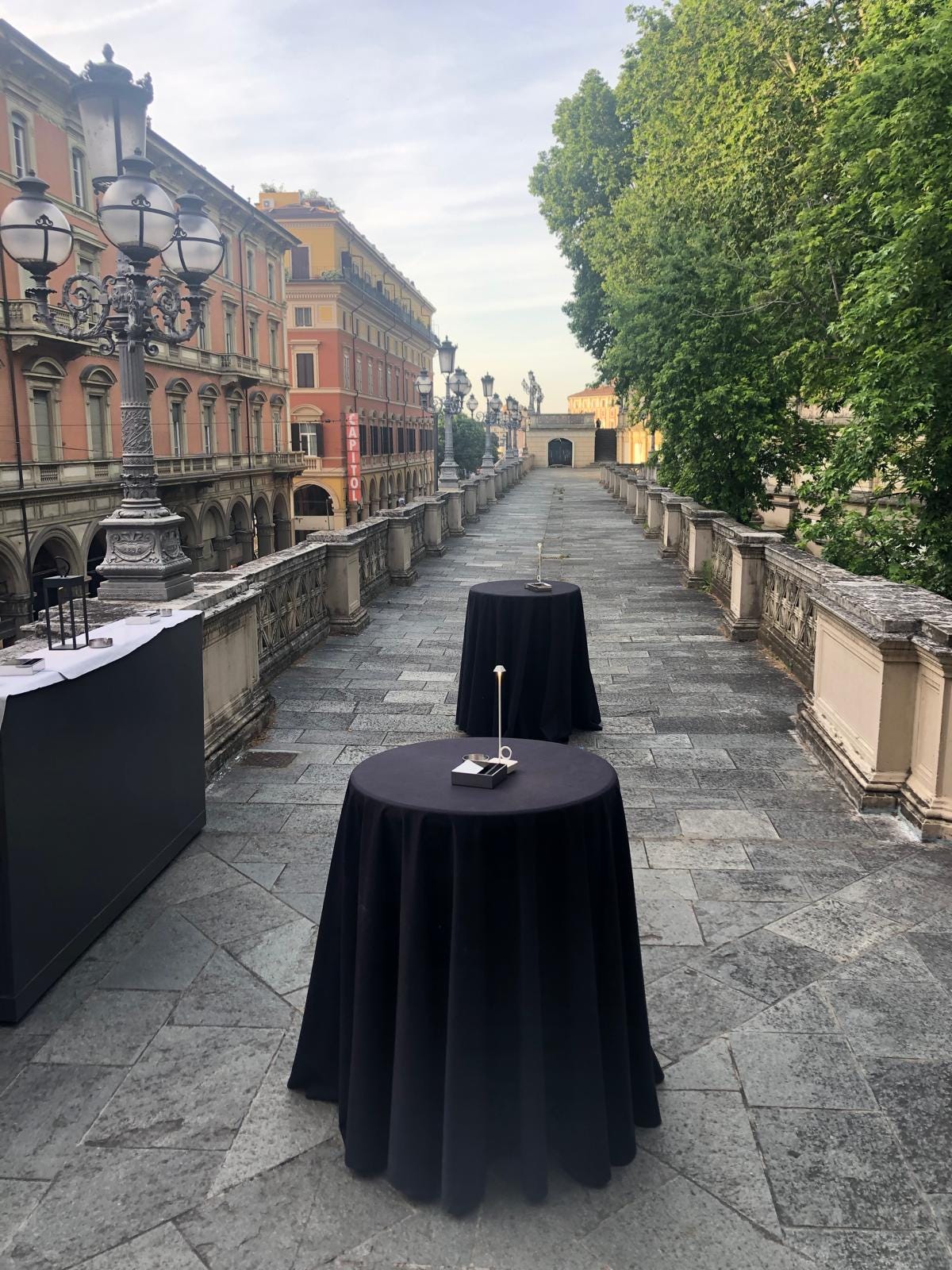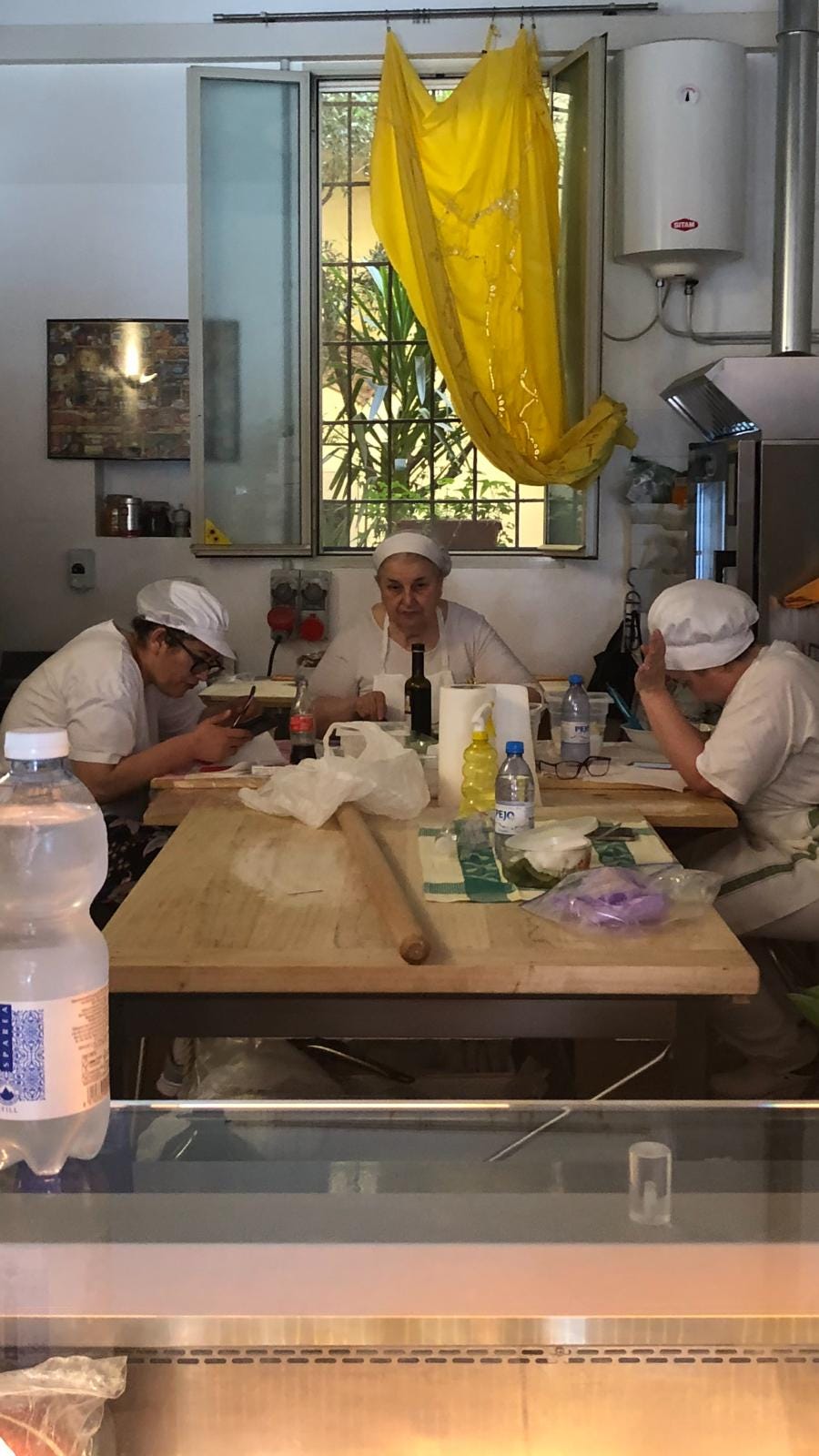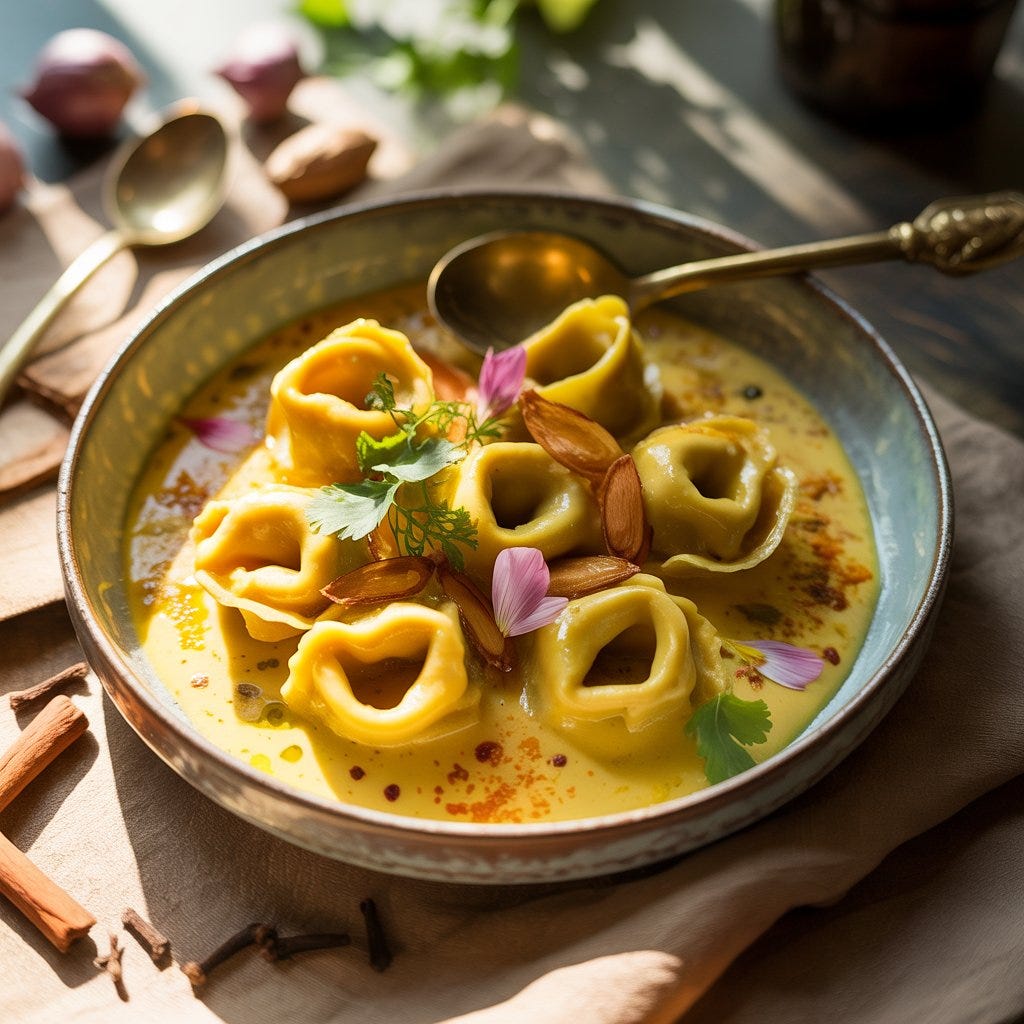Two weeks ago, I was in Bologna, where tortellini are hand-rolled like prayer. But I’ve been writing this from a bomb shelter in Israel, as missiles rain down and my country locks horns with an apocalyptic regime.
The goal: to stop Iran from acquiring weapons of mass destruction.
“Death to America. Death to Israel.” Death. Death. Death.
Such a shame.
Babylon was once the cradle of civilization—nestled in the Fertile Crescent, now scorched by hatred.
And in times like this, food becomes both refuge and resistance.
Babylon has become a towering Babel.
So as the sirens wail, I write.
As the missiles fall, I cook.
This week’s dish is one that shouldn’t exist—except in the imagination of someone like me:
Raised on Jewish-Iraqi comfort food,
Educated in the West,
Shaped by migration, law, kitchens, and exile.
I am East and West.
My mother was a German Holocaust survivor.
My father, born in colonial Calcutta, served in the British army in postwar Germany.
I was raised in the contradictions—and I cook to bridge them.
I don’t think outside the box.
I define the box.
So when I returned from Bologna recently, I didn’t bring back parmesan or ragù.
I brought saffron.
I brought rosewater.
I brought memory.
Of a Jewish general, fighting for Hindu-majority India, liberating a Muslim-majority country. This is the complex story of the subcontinent, told in human form.
Pakistan’s Gen Niazi surrenders to Lt Gen Aurora. General Jacob is on the far right
Jacob’s family, like mine, traced its roots to Baghdad through India. He rose to the highest military ranks, served in World War II, and led the liberation of Dhaka with a minimum of violence, negotiating Pakistan`s surrender, to give ride to the new state of Bangladesh.
And yet, Bangladesh—like so many post-colonial nations—remains deeply hostile to the Jewish state, thankless about the Jewish contribution to its freedom, wrongly lumping the once stateless Jews as “colonialists”.
Is Dianne Jacob, my writing mentor, related to General Jacob?
I don’t know. Maybe.
But I like to imagine it—two Baghdadi lineages meeting through craft: one in military strategy, the other in literary guidance.
This dish is my tribute to all of it: to Baghdadi Jews who migrated from Baghdad to Bombay to Bologna. To memory, invention, and the refusal to be boxed into one lane.
Where East Meets West—Again
In Bologna, I bought two ink-blue handmade ceramic bowls at biframciceramica.
Their glaze reminded me of saffron. Of turmeric. Of home.
I also bought some handmade tortellini at a shop nearby.
Back home I made a saffron-lemon cream tortellini, seasoned with ground Persian limes.
And then, I went further East.
What if I filled the tortellini with Malay-style paneer kofta?
And dressed it with a cashew cream korma sauce?
So here is my Italian saffron lemon cream tortellini, and now to my fantasy dish. Korma Tortellini.
Korma Tortellini Recipe
Paneer Malay Kofta Filling (Vegetarian)
200g paneer, grated
1 tbsp ghee
1 tsp ginger-garlic paste
¼ tsp ground nutmeg
¼ tsp cinnamon
¼ tsp turmeric
¼ tsp cumin
1 tbsp mashed potato or chickpea flour (for binding)
1 tbsp coconut milk or cream
Salt, to taste
Chopped mint or coriander, optional
Method: Sauté spices in ghee, mix with paneer and binder. Chill.
Tortellini Dough
200g all-purpose flour
2 large eggs
Pinch salt
Mix, knead 10 mins, rest 30 mins. Roll thin, cut 2" circles, fill and shape.
Cashew Cream Korma Sauce
1 tbsp ghee or oil
½ onion, minced
1 tsp garlic-ginger paste
½ tsp ground coriander
¼ tsp turmeric
⅛ tsp cinnamon
3 tbsp blended soaked cashews
150ml coconut milk or cream
Salt, to taste
Optional: saffron, rosewater, or kewra
Sauté onion/spices, add cashew paste, then coconut milk. Simmer.
To Serve: Toss tortellini in warm sauce. Drizzle with ghee. Garnish with:
Fried shallots
Toasted almond slivers
Scallion curls
Micro coriander or edible flowers
want the recipe?
This is Beyond Babylon.
Not Indian.
Not Italian.
Just truth, memory, and imagination—folded into pasta, dressed in spice, and served with love.
Here’s to life. 🥂

